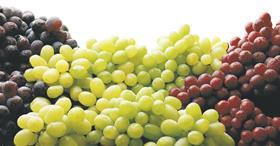
The first-ever direct shipments of Australian table grapes to China could depart as early as November this year, following confirmation that the two countries will sign an import protocol in August.
“We’ve been advised by Biosecurity Australia that China has sent a formal letter confirming a date to sign the protocol in Beijing, so we expect to have access by the week commencing 16 August,” Jeff Scott, CEO of the Australian Table Grape Association (ATGA), told Fruitnet.com.
For the Australian table grape industry, the protocol will come as a major breakthrough. Gaining clearance to ship direct to China is an achievement in itself, but the fact that the industry has negotiated a protocol that is commercially viable is a more remarkable feat.
“The protocol involves cold treatment for fruit fly, along with a systems-based approach for all other pests and diseases,” said Mr Scott. “It’s a good outcome and under no circumstances was ATGA going to sign off on an unworkable protocol. We have negotiated hard to get a systems-based approach that can be followed by growers across the whole of Australia, and any good grower should be able to comply with the requirements.”
China’s main pests of concern include light brown apple moth, mealy bugs and spiders, all of which can be easily managed through a systems-based approach, according to Mr Scott. “Chinese inspectors will come and verify the systems approach before the shipments leave and all shipments will be inspected by AQIS before departure and on arrival by Chinese quarantine officers,” he explained.
Apart from pushing up shipping and inspection costs, in-transit cold sterilisation poses no problems for Australian grape exporters, Mr Scott noted. “We can either ship at 1.1oC for 16 days or 2.1oC for 21 days, and our industry is already doing this successfully for other markets,” he pointed out.
From a marketing point of view, the protocol will open up massive opportunities for the industry, Mr Scott believes. “Having direct access to cities like Shanghai and Beijing is like having access to two new countries in terms of their population size and spending power,” he commented. “The Guangzhou-based buyers in southern China tell us that less than five per cent of Australian grapes are heading to the northern cities currently. Our fruit is hardly known up there, so there’s huge potential.”
Mr Scott recently took part in an Australian delegation to the 2010 Shanghai World Expo, and he said interest in grapes from buyers in China’s commercial capital is very strong. “We had a lot of importers come up to us and say ‘we have heard Australia has god quality grapes and we want to import your fruit’,” he remarked.
Up until now, Australia has been shipping around A$50-70m-worth of grapes to Hong Kong in an average year, according to Mr Scott. “In a few years’ time, we could potentially be sending the same amount of fruit again to both Beijing and Shanghai.”






No comments yet